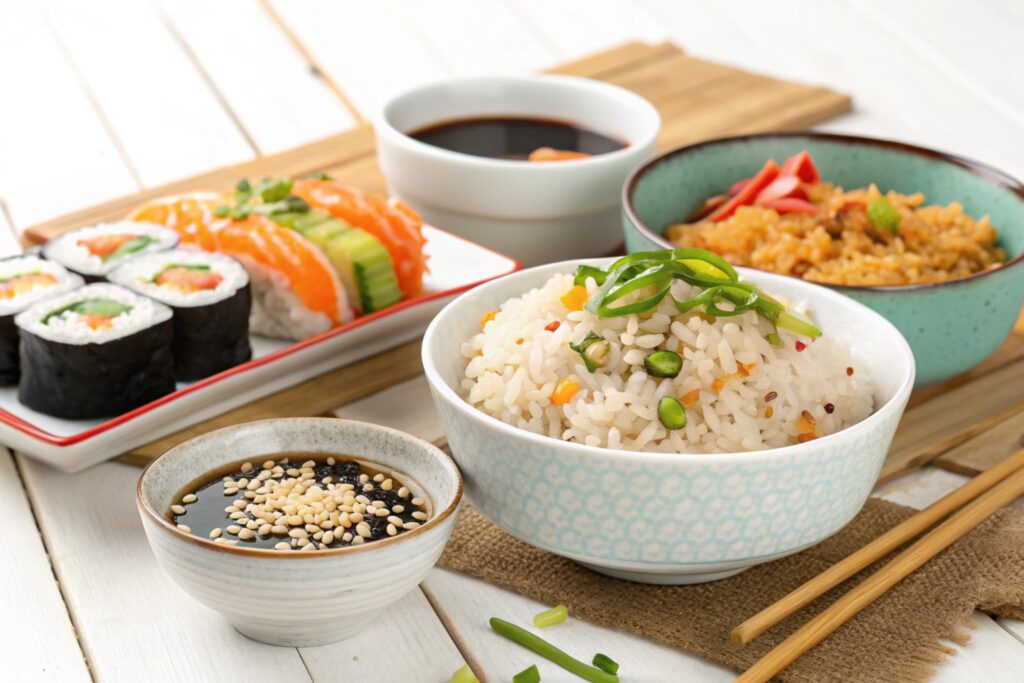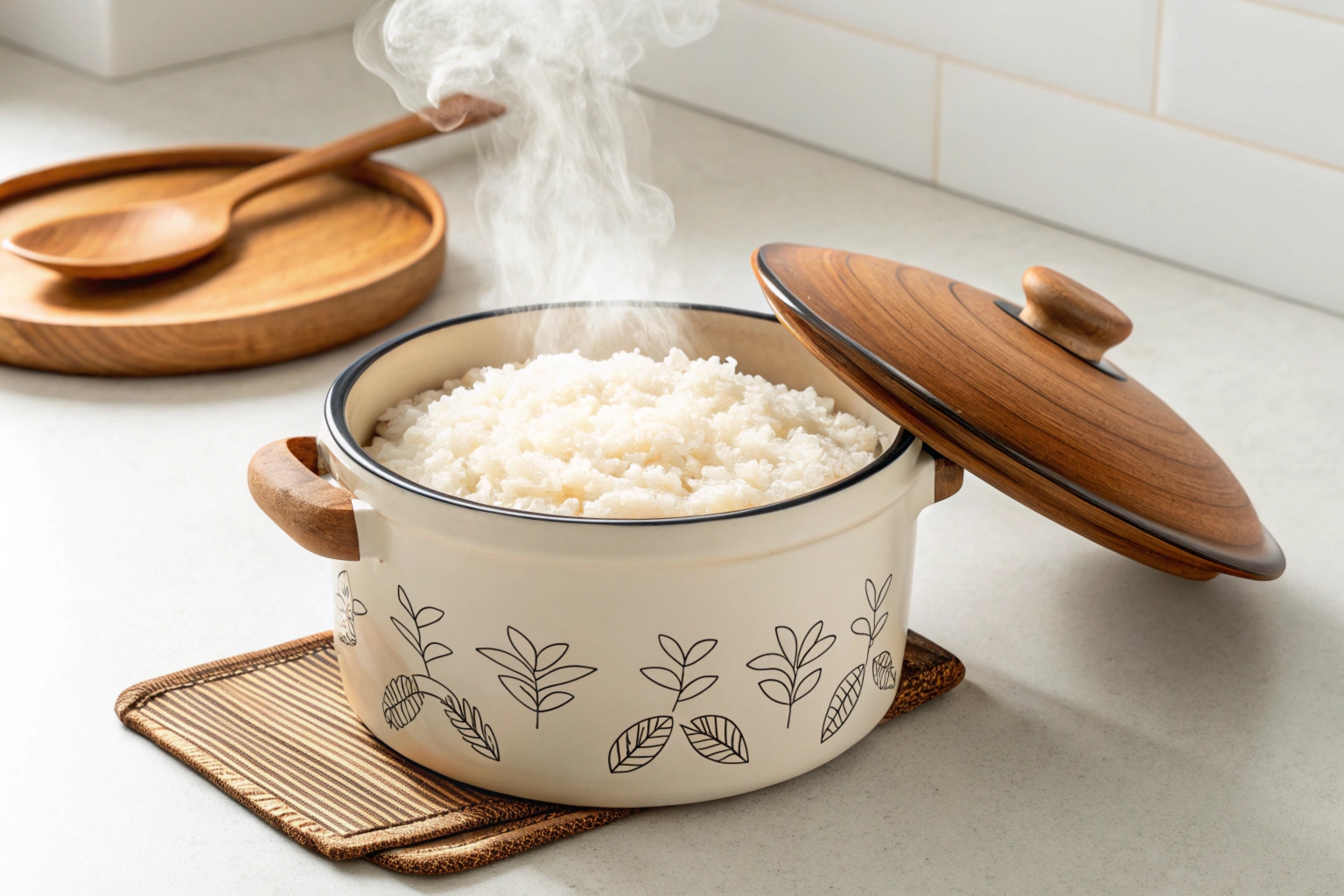Cooking rice is a daily ritual in many households across the globe. Whether it’s a simple side dish or the centerpiece of a meal, rice is a versatile and indispensable staple in countless cuisines. However, achieving perfectly cooked rice can be a challenge, especially for beginners. This is where rice pots, also known as rice cookers, come to the rescue.
These appliances not only simplify the cooking process but also enhance the quality and consistency of the rice you prepare. In this article, we will delve into the numerous advantages of using a rice cooker, explore stovetop techniques, and provide tips for troubleshooting common rice cooking issues. Additionally, we’ll discuss how rice pots can be used to prepare creative recipes, highlighting their versatility and practicality in modern kitchens.
Advantages of Using a Rice Cooker
Rice cookers, also known as rice pots, have become essential kitchen appliances for many households. Their convenience, consistency, and versatility make them invaluable for preparing a variety of dishes. Let’s explore the key advantages of using a rice cooker in detail:
Convenience and Ease of Use
Rice cookers are designed to simplify the rice cooking process. With just a press of a button, you can prepare perfectly cooked rice without constant supervision. The one-touch rice cooking feature is particularly beneficial for those new to cooking or anyone juggling a busy schedule. Modern rice cookers often include digital controls and pre-set options for different types of rice, ensuring optimal results every time. Compact rice cookers are especially advantageous for small kitchens or single-person households, providing efficient use of space while maintaining high performance.
Consistent Cooking Results
One of the standout benefits of using a rice cooker is its ability to deliver consistent results. Unlike stovetop methods, which require close attention to temperature and timing, rice cookers use advanced heating elements and sensors to monitor and adjust the cooking process. This ensures that the rice is evenly cooked, whether it’s fluffy white rice, aromatic basmati, or sticky rice for sushi. Additionally, many models have a “keep warm” function that maintains the rice’s freshness and temperature for hours after cooking.
Time-Saving Features
Time-saving features are a major advantage of rice cookers. Many models include a delay timer, allowing you to set the cooking start time in advance. This is ideal for those who want fresh rice ready as soon as they get home or wake up. Advanced models can even reduce pre-soak times for certain rice varieties, further cutting down on preparation time. With such features, rice cookers free up your time, enabling you to focus on other aspects of meal preparation or simply relax.
Stovetop Techniques for Cooking Rice
While rice cookers are incredibly convenient, stovetop techniques remain a classic method for preparing rice. Mastering this approach requires attention to detail, but it can yield excellent results when done correctly.
Essential Cooking Methods
Cooking rice on the stovetop begins with choosing the right pot. A heavy-bottomed pot with a tight-fitting lid is ideal for even heat distribution. Start by boiling the measured water before adding rinsed rice. Once the rice is in, reduce the heat to a gentle simmer, cover the pot, and let it cook undisturbed. Avoid lifting the lid frequently, as this can disrupt the cooking process and lead to unevenly cooked rice.
Ideal Water-to-Rice Ratio
The water-to-rice ratio is a critical factor for achieving perfectly cooked rice. For white rice, the standard ratio is 1 cup of rice to 2 cups of water. Brown rice, on the other hand, requires more water and longer cooking times due to its tougher outer layer. Specialty rice varieties like Jasmine or medium-grain rice may have slightly different requirements. Always refer to the packaging for guidance and adjust based on personal preference.
Rinsing Rice Before Cooking
Rinsing rice is an often overlooked but important step. It helps remove excess starches, which can cause the rice to become overly sticky or clumpy. Place the rice in a fine-mesh sieve or a bowl and rinse under cold running water until the water runs clear. For dishes like perfect rice pilaf or Japanese-style rice porridge, rinsing ensures a clean texture and enhances the dish’s overall quality.
Utilizing an Instant Pot for Rice
Instant Pots have revolutionized cooking by combining multiple appliances into one. When it comes to cooking rice, they offer unmatched efficiency and versatility.
Instant Pot Benefits
An Instant Pot functions as a pressure cooker, slow cooker, and rice cooker all in one. It’s a powerful tool for preparing various types of rice, including Jasmine white rice, black rice, and mixed rice. The appliance’s pressure-cooking feature reduces cooking time significantly while ensuring even heat distribution. Instant Pots are especially effective for dishes like Chinese-style rice porridge or Chesapeake Crab Carrot Rice, which require precise control over cooking conditions.
Cooking Times and Tips
Cooking rice in an Instant Pot is straightforward. For example, 1 cup of long-grain white rice typically cooks in about 4 minutes under pressure. Adding olive oil or plant-based butter to the rice before cooking enhances its flavor and prevents sticking. To achieve the best results, allow the pressure to release naturally for a few minutes after cooking. This step helps the rice settle and improves its texture.
Versatility of Rice Cookers
Rice cookers are far more than single-purpose appliances. Their versatility extends to preparing a wide range of dishes, making them an invaluable addition to any kitchen.
Cooking Capacity and Sizes
Rice cookers come in various sizes to suit different needs. Small-capacity models are perfect for individuals or couples, while larger ones can handle quantities sufficient for family meals or gatherings. Some models offer multiple cooking modes, allowing you to switch seamlessly between preparing small portions and larger batches.
Accessories Included with Rice Cookers
Many rice cookers come with accessories that enhance their functionality. Steaming baskets allow you to cook vegetables or proteins simultaneously, making meal preparation more efficient. Measuring cups and water lines on the inner pot help ensure accurate measurements, which are critical for achieving the right texture and consistency in mixed rice dishes or standard rice recipes.
Alternative Dishes You Can Prepare
Rice cookers can prepare more than just rice. They excel at steaming, slow-cooking, and even baking. Use your rice cooker to prepare dishes like noodle soups, nutty quinoa, and even Bangkok street food-inspired meals. Their versatility encourages culinary creativity and allows you to experiment with new recipes.
Troubleshooting Common Rice Cooking Issues
Even with a reliable rice cooker or stovetop method, issues can arise. Here’s how to troubleshoot common problems:
Undercooked Rice Solutions
If your rice turns out undercooked, don’t worry. Add a bit of water and continue cooking for a few minutes. To prevent this issue in the future, ensure you use the correct water-to-rice ratio and check your appliance’s settings.
Overcooked Rice Solutions
Overcooked rice is often mushy and unappealing. Spread it on a flat surface to cool quickly and remove excess moisture. Next time, reduce the water slightly or adjust the cooking time.
Sticky Rice Remedies
Sticky rice is desirable in some dishes but not in others. If it’s unintended, the likely culprit is excess starch. Rinsing the rice thoroughly before cooking and using less water for certain varieties can help avoid this issue.
Recipe Inspirations for Rice Dishes

Rice’s versatility makes it a staple ingredient for countless recipes. Here are some ideas to inspire your next meal:
Simple Rice Recipes
Start with basic recipes like steamed Jasmine white rice or a quick rice bowl. Enhance these dishes with simple seasonings such as soy sauce, sesame oil, or a dash of butter for added richness.
Creative Dishes Featuring Rice
Unleash your creativity with recipes like rice with carrot juice, rice with seasonings, or mixed rice bowls topped with fresh vegetables and proteins. For dinner, consider pairing rice with Asian dishes like teriyaki chicken or Thai curries. These flavorful combinations elevate rice from a side dish to the star of the meal.
Practical Benefits of Using a Rice Pot
Rice pots are practical kitchen companions that simplify meal preparation and cleanup. Here’s why they’re an essential addition to your kitchen:
Easy Serving Options
Rice pots often feature non-stick interiors, making it easy to serve fresh rice directly from the pot. Their user-friendly designs minimize mess, making them perfect for family meals and entertaining.
Cleanup Made Simple
Cleaning a rice pot is a breeze. Many models feature dishwasher-safe components or non-stick coatings that prevent rice from sticking. Proper cleaning and maintenance will ensure your rice pot remains functional and long-lasting.
Durability and Quality of Rice Cookers
Modern rice cookers are built to last. Their durable materials withstand frequent use, and many come with warranty guarantees for added peace of mind. Investing in a high-quality rice pot ensures consistent performance for years to come.
Conclusion: The Value of a Rice Pot
A rice pot is more than just a kitchen appliance; it’s a versatile tool that simplifies meal preparation and enhances the quality of your dishes. From delivering consistent results to saving time and offering versatility, rice pots are indispensable for both novice cooks and culinary enthusiasts. Whether you’re preparing fluffy white rice, aromatic basmati, or creative one-pot meals, a reliable rice pot will elevate your cooking experience and bring convenience to your kitchen. Invest in a quality rice pot today and discover the difference it can make in your daily cooking.
explore recipes like shrimp and sausage recipes for a flavorful meal.

